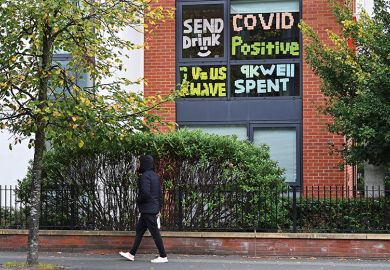Tales of UK students forced to commute up to an hour to campus, sometimes between cities, will horrify those of us who fondly remember our own leisurely strolls to lectures.
This year, there have been incidents of freshers asked to travel between Dundee and St Andrews, Manchester and Huddersfield, and between Bristol and south Wales, as well as overnight queues outside letting agents in Durham, because of a shortage of student housing. They highlight the perils of significant year-on-year undergraduate growth and raise important issues about the student experience.
But it is perhaps too easy to condemn those universities whose undergraduates have ended up with such tiring and onerous commutes. Growing student numbers are, for some institutions, the only way to make ends meet given that maximum domestic tuition fees – now £9,250 a year – are worth less than 75 per cent of what they were a decade ago.
The UK’s research model compounds the problem. Universities must find about £4 billion a year to cover the full costs of research, mostly from the billions of pounds received from international students. As Universities UK’s new chief executive Vivienne Stern explained to the House of Commons’ Science and Technology Select Committee, reducing international student numbers will reduce the amount universities can spend on research.
But is the upwards trajectory of international student numbers sustainable for universities, and their host cities? In the past five years alone, England has grown its non-European Union international student enrolments by about 100,000, according to the Higher Education Statistics Agency – roughly the size of Bath or Preston (respectively the 84th and 85th biggest towns and cities in the UK). Domestic full-time undergraduate numbers have grown by about 120,000 in the same period, taking the combined student growth total above Wolverhampton’s estimated population of 218,000.
The expansion of universities has certainly brought economic advantages – particularly the £29 billion generated for the UK economy from international students each year – but universities need to be alert to the problems too. Many of the UK’s universities, including the original red-bricks, were founded to further the economic growth of the cities and regions in which they are based. Some of their early buildings were funded through public subscription. Universities should not forget that they have a responsibility to serve their regions.
So how can the funding shortfall on research and educating home undergraduates (estimated at about £5 billion) be met? Universities could restructure to be more efficient, but that would be difficult and would not completely fill the hole. Only extra government funding could do that.
Many multinational corporations are beginning to implement a more community-minded model: raw materials are sourced as close to the factory as possible, products are tailored to local needs, and greater thought is being given to market pull, rather than pushing a product into production. There are lessons here for universities in who we recruit, what we teach them, and what research we conduct.
Rather than seeing towns and cities as temporary dormitories for their students, universities could better serve their local regions by helping to attract talent from across the world in a planned way and encourage them to remain, where possible, after graduation.
Moreover, universities should be very clear about why they are recruiting internationally. It should be to enhance the experience of all students and to help build a culturally rich, economically successful and highly skilled region. But currently, some universities are putting global ambition and income above local need and sustainability – and with current funding pressures and incentives as they are, it is difficult to see this changing soon.
Neal Juster is vice-chancellor of the University of Lincoln.
Register to continue
Why register?
- Registration is free and only takes a moment
- Once registered, you can read 3 articles a month
- Sign up for our newsletter
Subscribe
Or subscribe for unlimited access to:
- Unlimited access to news, views, insights & reviews
- Digital editions
- Digital access to THE’s university and college rankings analysis
Already registered or a current subscriber?







